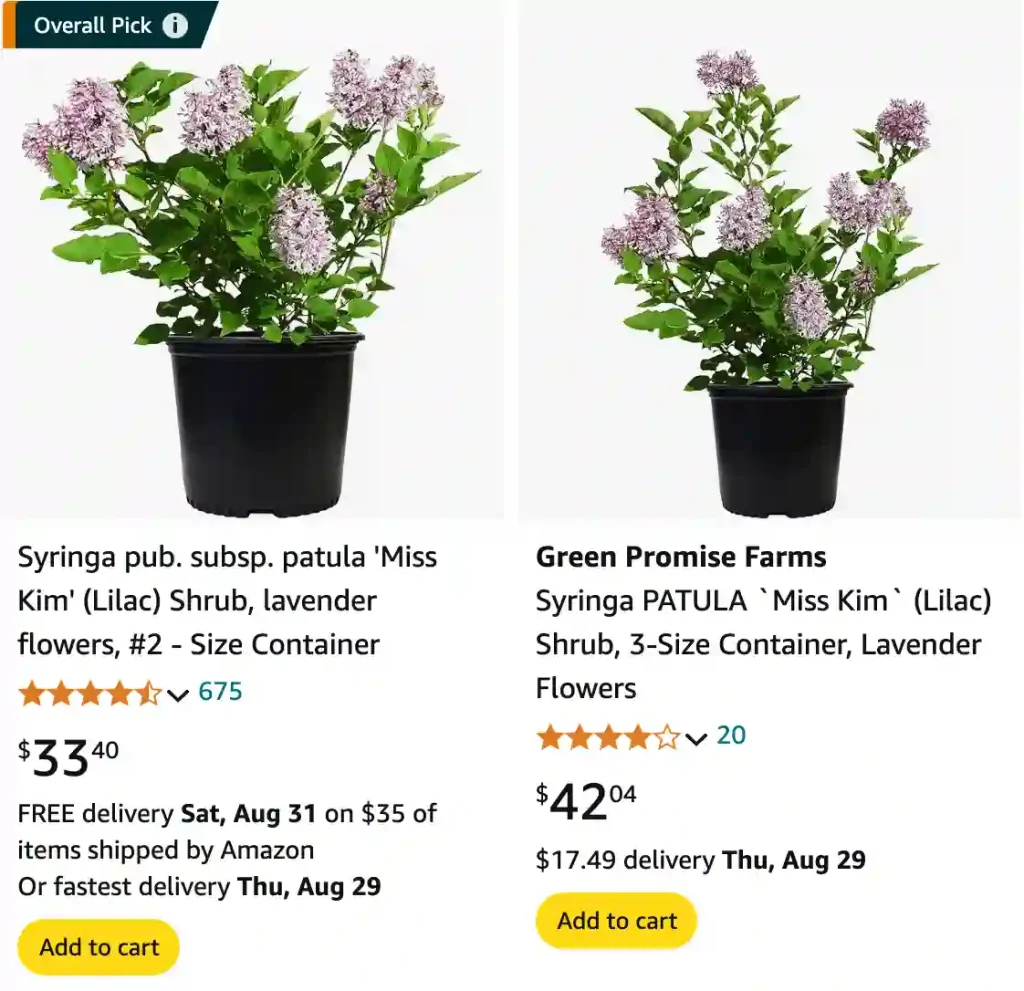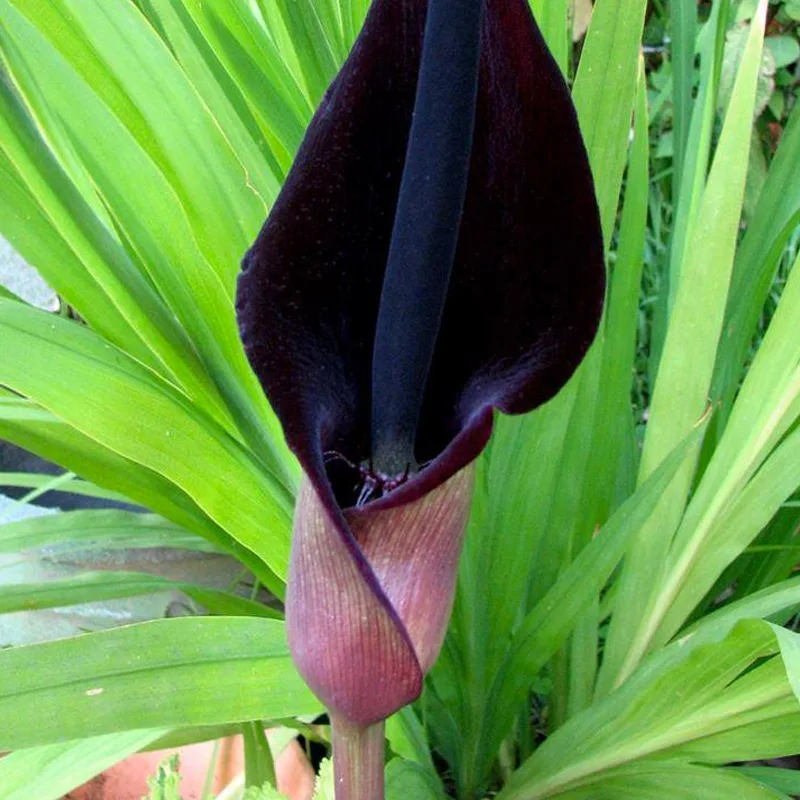
When Does Miss Kim Lilac Bloom?
Miss Kim Lilac typically blooms in late spring to early summer. I’ve found that it starts showing off its delicate, lavender-blue flowers around mid-May and can continue to bloom into June. The blooming period is relatively short but makes a significant impact with its vibrant color and pleasant fragrance.
12 Species in Genus Syringa – Lilac
How to Prune Miss Kim Lilac?
Pruning Miss Kim Lilac is essential for maintaining its shape and promoting healthy growth. The best time to prune is immediately after it has finished blooming. This timing allows the plant to develop new growth and flower buds for the next season. I usually remove dead or diseased wood, as well as any overly dense branches, to improve air circulation and sunlight penetration.
When to Prune Miss Kim Lilac?
I prune Miss Kim Lilac right after the bloom period. If you wait too long, you might accidentally remove the buds for the next season. Regular pruning helps maintain the plant’s shape and encourages it to grow fuller. It’s crucial to avoid heavy pruning in late summer or fall, as this can damage the plant and reduce its winter hardiness.
How Big Do Miss Kim Lilacs Get?
Miss Kim Lilac is a relatively compact shrub compared to some other lilacs. It usually reaches a height of about 4 to 6 feet and has a similar spread. I’ve noticed that its size makes it a great choice for smaller gardens or as a foundation plant where space is limited.
How Long Do Miss Kim Lilacs Bloom?
The blooming period for Miss Kim Lilac lasts around 2 to 3 weeks. While this may seem brief, the sheer beauty and fragrance of the flowers make it worth the wait. During this time, the shrub becomes a focal point in the garden, attracting attention with its lovely blooms.
Are Miss Kim Lilacs Poisonous to Cats?
Miss Kim Lilacs are not known to be toxic to cats. However, it’s always a good idea to monitor pets around any plants, as ingestion of large amounts of any plant material can sometimes cause mild gastrointestinal upset. I’ve never had issues with my cats and this lilac, but it’s always better to be cautious.
Can You Grow Miss Kim Lilac in a Pot?
Yes, Miss Kim Lilac can be grown in a pot. I’ve successfully grown them in containers, and they do quite well as long as the pot is large enough and has good drainage. Make sure to use a high-quality potting mix and provide regular water and fertilization to keep the plant healthy and blooming.
Do Deer Eat Miss Kim Lilac?
Deer generally avoid Miss Kim Lilac because of its strong fragrance and the fact that it is not particularly palatable to them. I’ve found that this lilac is fairly deer-resistant, making it a good choice for gardens in areas where deer are a concern.
Do Miss Kim Lilacs Smell Good?
Yes, Miss Kim Lilacs have a delightful fragrance. The scent is sweet and subtle, which adds to the charm of this plant. It’s one of the reasons I enjoy having them in my garden—they bring not only visual appeal but also a lovely aroma.
Does Miss Kim Lilac Attract Bees?
Miss Kim Lilac does attract bees, which are drawn to its fragrant flowers. I’ve observed that the blooming period is a busy time for pollinators in my garden. If you want to support local bee populations, this lilac is a great choice.
How Fast Do Miss Kim Lilacs Grow?
Miss Kim Lilacs have a moderate growth rate. They typically grow about 6 to 12 inches per year. With proper care, they can reach their mature size within a few years. I’ve found that their growth rate is steady and consistent, making them a reliable addition to the garden.
How to Care for Miss Kim Lilac?
To care for Miss Kim Lilac, ensure it is planted in well-draining soil and receives full sun to part shade. Regular watering is important, especially during dry spells, but avoid overwatering as this can lead to root rot. Fertilize once a year after blooming to support healthy growth. Mulching around the base helps retain moisture and suppress weeds.
Miss Kim Lilac vs Common Lilac
Miss Kim Lilac differs from the Common Lilac in several ways. While both are beautiful and fragrant, Miss Kim is more compact and has a longer blooming period. Common Lilacs can grow much taller and require more space. Additionally, Miss Kim has a more refined flower color compared to the traditional purple of the Common Lilac.
Miss Kim Lilac vs Korean Lilac
Miss Kim Lilac and Korean Lilac are similar but have distinct differences. Both are compact, but Miss Kim tends to have a more intense fragrance and a slightly more refined flower color. Korean Lilac might be a bit more tolerant of varied soil conditions, but Miss Kim’s blooming period is usually a bit longer.
What is Miss Kim Lilac?
Miss Kim Lilac is a variety of lilac known for its compact size, beautiful lavender-blue flowers, and delightful fragrance. It’s a hybrid of the Korean Lilac and is favored for its adaptability and ornamental value. It’s an excellent choice for small gardens and urban landscapes due to its manageable size.
How to Propagate Miss Kim Lilac?
To propagate Miss Kim Lilac, you can use softwood cuttings taken in late spring or early summer. Ensure the cuttings are taken from healthy plants and dip them in rooting hormone before planting in a well-draining mix. Keep the cuttings moist and in a warm, bright location until they develop roots.
What to Plant with Miss Kim Lilac?
Miss Kim Lilac pairs well with other shrubs and perennials that complement its size and blooming period. Consider planting it with groundcovers like Creeping Phlox or ornamental grasses such as Blue Fescue. Companion plants that bloom at different times can extend the color interest in your garden.
Is Miss Kim Lilac Toxic?
Miss Kim Lilac is not considered toxic to humans or pets. While it’s always a good practice to prevent pets from chewing on plants, Miss Kim Lilac is generally safe and won’t cause significant harm if ingested in small amounts.
Benefits of Miss Kim Lilac
Miss Kim Lilac offers several benefits: it is compact and easy to manage, has a lovely fragrance, and provides beautiful blooms that enhance garden aesthetics. Its resistance to deer and adaptability to various garden conditions make it a versatile choice for many gardeners.
Common Problems with Miss Kim Lilac
Common problems include powdery mildew and aphid infestations. Ensuring good air circulation and proper watering can help prevent these issues. Regular inspection and appropriate treatment can keep Miss Kim Lilac healthy and thriving.
By understanding these aspects of Miss Kim Lilac, I hope you can make the most of this delightful shrub in your garden. Its charm and ease of care make it a great addition to any landscape.
If i die, water my plants!
